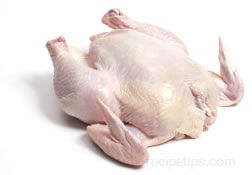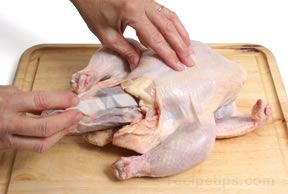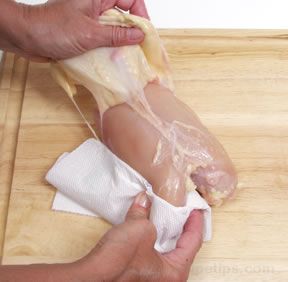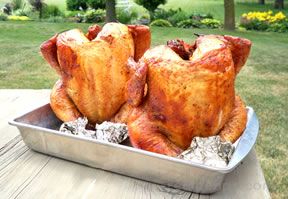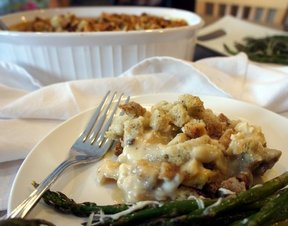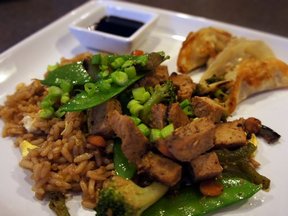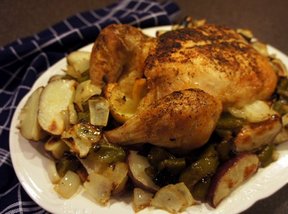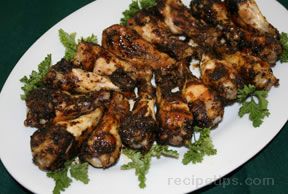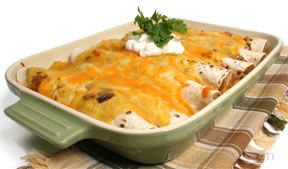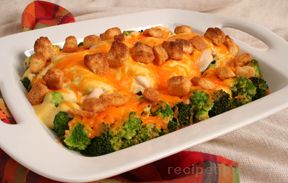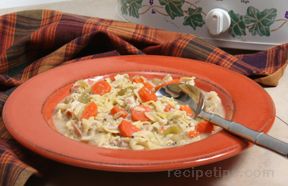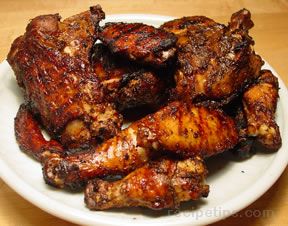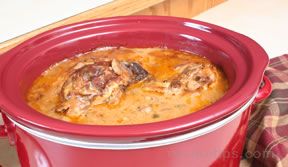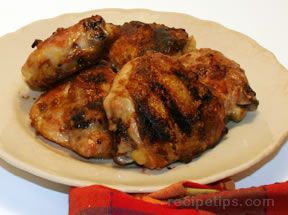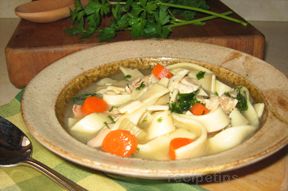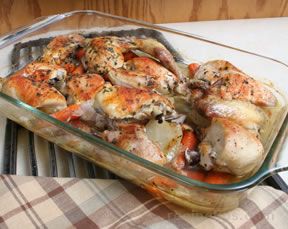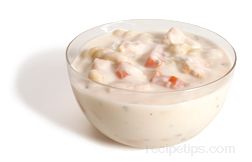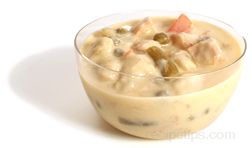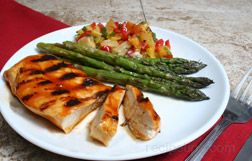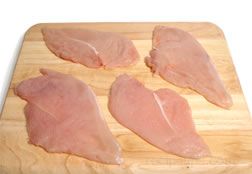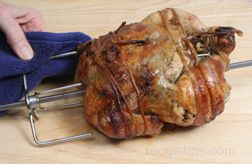|
Stuffing can be made from many different ingredients, such as simple herbs, vegetables and fruit, but can also be made from more complex bread based or grain based (grains, such as rice, barley and kasha that are cooked until tender) recipes. Simple ingredients, such as onions, garlic, lemon, herbs, and spices, can be inserted into the cavity of the chicken or under the skin to add flavor to the meat. Bread or grain based stuffing may include sausage, chopped or ground giblet pieces, vegetables, herbs, and spices. It is common to use eggs for binding and stock or broth to moisten the stuffing. Before inserting the stuffing, wash the chicken inside and out and then pat dry with a paper towel. Be sure any stuffing that has been cooked, or ingredient that is cooked, is cooled completely before inserting into the cavity of the chicken. The chicken should not be stuffed until just before it is to be cooked, so that the risk of bacterial growth is reduced. Insert the stuffing through the neck, into the body cavities, but be sure that you do not overstuff because the stuffing will expand during cooking due to the absorption of the juices from the chicken. When cooking the stuffed chicken, the internal temperature of the stuffing should reach 165°F. Cooking the stuffing to this temperature can result in the meat becoming overcooked. Many cooks prefer to cook the stuffing separately from the chicken. The stuffing is placed in a buttered baking dish and cooked during the last 45 minutes to an hour of the roasting time. Stuffing that is cooked outside of the chicken as a separate dish is referred to as "dressing." The following guidelines should be followed in regard to stuffing:
Chicken pieces can also be stuffed with ingredients such as herbs, spices, onions, garlic, vegetables, fruit, mushrooms, and cheese. The stuffing can be added in several manners, such as under the skin, in a pocket cut in the meat, or rolled up inside a flattened boneless piece. When stuffing the chicken pieces, the same guidelines for proper handling and safety precautions for stuffing a whole chicken should be followed. |
Loading
Stuffing Chicken


Provided By
RecipeTips
RecipeTips

Loading
There currently aren't any reviews or comments for this article. Be the first!
Advertisement
Advertisement



